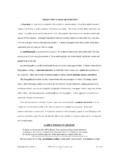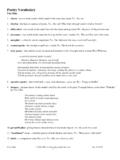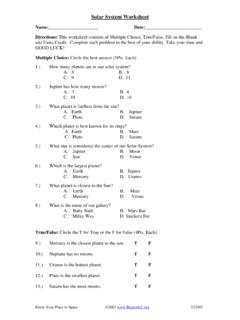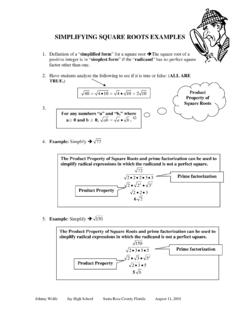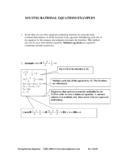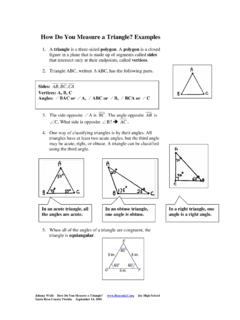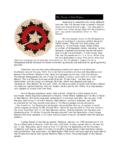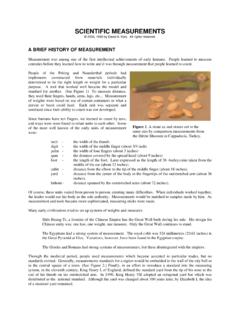Transcription of Brief History of Cave Paintings - Beacon Learning …
1 Brief History of cave Paintings Altimira, Spain The first cave Paintings were found in 1870 in Altimira, Spain by Don Marcelino and his daughter. They were painted by the Magdalenian people between 16,000-9,000 BC. This would have been 11,000-19,000 years ago. These Paintings at Altimira are mainly of the bison. Many of the bison are drawn and then painted using the boulders for the animal's shoulders. This made them look three-dimensional. These Paintings are sometimes called The Sistine Chapel of Paleolithic Art . Additional information from the Internet: Lascaux, France Four boys searching for a lost dog also discovered Paintings at Lascaux, France in 1940. These Paintings were created around 15,000 BC, which would make them about 17,000 years old. There are seven chambers in the Lascaux cave ; the Great Hall of the Bulls, the Painted Gallery, the Lateral Passage, the Chamber of Engravings, the Main Gallery, the Chamber of Felines, and the Shaft of the Dead Man.
2 The Hall of the Bulls is the most impressive. It is composed of horses, bulls, and stags. Some of the animals have been painted over, suggesting that different groups of people might have lived in this same cave . The painting in the Shaft of the Dead Man is unusual because the human figure is not normally drawn. This scene shows the image of a man that appears to have been killed by the bison. Additional information from the Internet: cave Paintings Chauvet-Pont-d'Arc Chauvet-Pont-d'Arc cave in the South of France is the newest cave painting to be discovered. Jean-Marie Chauvet, Christian Hillaire and Heliette Brunel-Deschamps discovered the cave on December 18, 1994. There is a menagerie of animals on the walls of these caves. Many of the animals like the ones in Lascaux were painted over each other. The oldest were probably painted around 30,000 BC, making them about 32000 years old.
3 The cave was probably occupied for nearly 10,000 years. It is thought that a violent collapse blocked the natural entrance. Additional information from the Internet: cave Paintings Rev. 1 / 04. 1. Theories About the cave Paintings Humans had not learned to write during the prehistoric time period. They communicated through cave Paintings . Why did man find a need to paint on the walls of the caves? We know that most of the Paintings were of animals. However, there are a few Paintings that have human figures either in etchings or in a painting , like the scene in Lascaux of the Dead Man. The face of the dead man is represented by a bird's face, but it is the body of a human. Perhaps they did not want to portray a human face, thinking that it might take the soul. There are three theories that the prehistoric man might have painted animals on the walls of the caves.
4 Perhaps the cave man wanted to decorate the cave and chose animals because they were important to their existence. The second theory could have been that they considered this magic to help the hunters. Perhaps if the artist could capture the image of the animal, they could capture the animal in a hunt. Prehistoric man could have used the painting of animals on the walls of caves to document their hunting expeditions. Methods of painting Prehistoric people would have used natural objects to paint the walls of the caves. To etch into the rock, they could have used sharp tools or a spear. The paint or color that they probably used was from berries, clay, soot, or charcoal. The tools used to apply the paint could have been made by attaching straw, leaves, moss, or hair to sticks. They might have used hollow bones or reeds to spray the color on, similar to an airbrush technique.
5 cave Paintings Rev. 1 / 04. 2. Rubrics for Assessment Assessment for the cave painting Grade Working Working Significant for a Explaining Constructively Cooperatively Prehistoric Time Importance in their Period Society A The students work the All of the members of the The cave painting shows The students explain to whole time by planning group work together what they consider the rest of the class what they need to put in without arguing. important for survival. what their clan painted their painting . Everyone participates. (Ex. Hunting, gathering, and how it was dwelling, water) significant to their society B The students work most Most of the members of Even though they have The students explain to of the time by planning the group work together not worked very the rest of the class what they need to put in without arguing.
6 Most of constructively or what their clan painted their painting . the students participate. cooperatively, they still and how it was have a cave painting that significant to their shows what they consider society. important for survival. (Ex. Hunting, gathering, dwelling, water). C The students work some Some of the members of The cave painting shows The students explain to of the time by planning the group work together to some degree what they the rest of the class what they need to put in without arguing. Some of consider important for what their clan painted their painting . the students participate. survival. (Ex. Hunting, and how it was gathering, dwelling, significant to their water) However, they society. use something from the modern day time period.(Ex. Something in technology or writing). D The students only work Most of the members of The cave painting shows The students goof some of the allotted time the group work together what they consider around when they are on their planning and cave without arguing.
7 Most of important for survival. suppose to explain what painting . They talk about the students participate. (Ex. Hunting, gathering, their clan painted and other things or disrupt dwelling, water) how it was significant the rest of the class. to their society. F The students do not The students do not work The cave painting , if they The students will not attempt to plan for their together at all. They have one, does not have explain their cave cave painting . They do argue or do not anything to do with what painting or they make a not produce a cave communicate. they consider important big joke out of it. painting or they produce for survival. one that does not have anything to do with the assignment. cave Paintings Rev. 1 / 04. 3.


